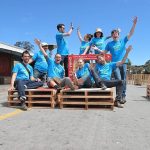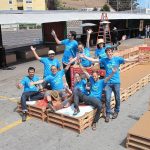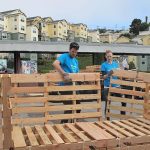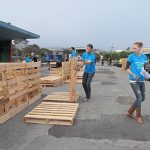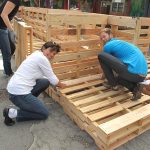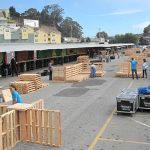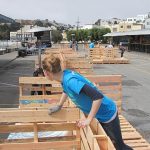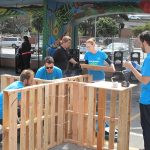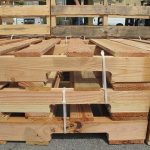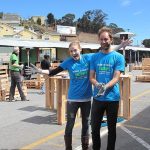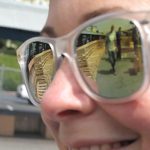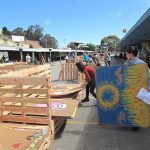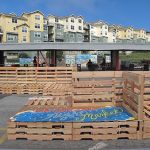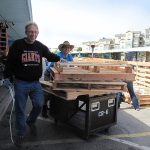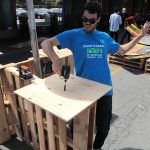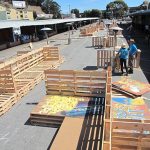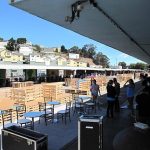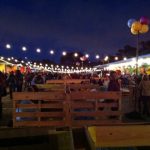Middle Lake Restoration Completed, Golden Gate Park
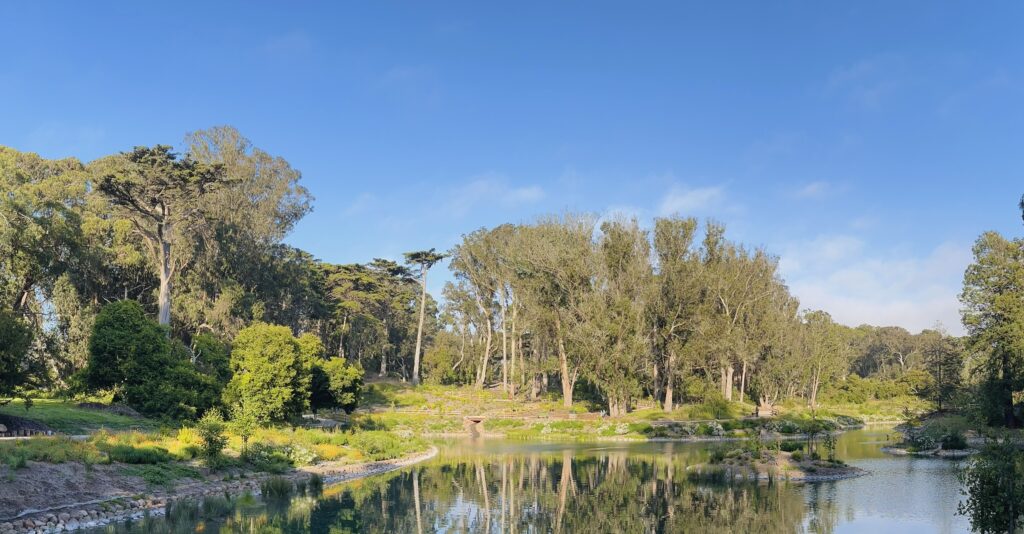
In 2022, INTERSTICE was engaged in an ambitious project to restore Middle Lake in Golden Gate Park, transforming it from a dried-up basin into a vibrant habitat teeming with life. Middle Lake, the missing link in the “Chain of Lakes” series of three interconnected lakes in the west end of San Francisco’s Golden Gate Park, has faced significant ecological decline over the past 150 years since the park was conceived, due to leaks in its clay liner, reduced water depth, algae buildup, and the encroachment of invasive species. Mere improvements were insufficient to save the lake; it required a comprehensive restoration.
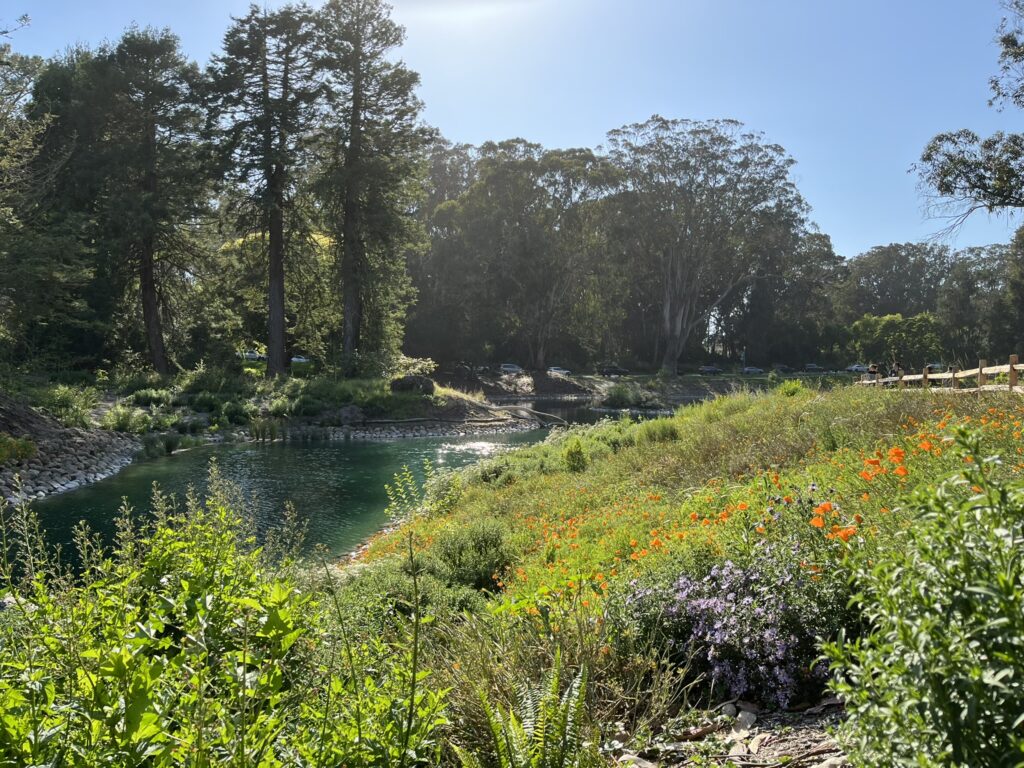
Teamwork Creates A Healthy Community and Habitat
With INTERSTICE in the role of landscape architect on the Construction Team working with San Francisco Recreation and Parks, San Francisco Department of Public Works, Woodard & Curran Civil Engineers, AGS Engineering, Bauman Construction and Catmex Landscaping, over the past nearly two years – Middle Lake has been transformed into a stunning 85,000-square-foot body of sparkling luminous water surrounded by over 10,000 plants including native shrubs, grasses, aquatic plants, wildflowers, native oaks, confers, and dogwood trees. The community input and design effort led by SF Recreation and Parks and developed by Woodard & Curran with the Office of Cheryl Barton engaged numerous stakeholder inputs, including the adjacent residential community, park operations, and multiple city departments related to the environment and its stewardship. The lake is now a lively ecosystem buzzing with insects, bees, and birds and is already home to a goose family that moved in during late construction, gracing the area with six goslings this spring. Raptors tour the skies over the new lake, alongside perching songbirds and numerous shorebirds.
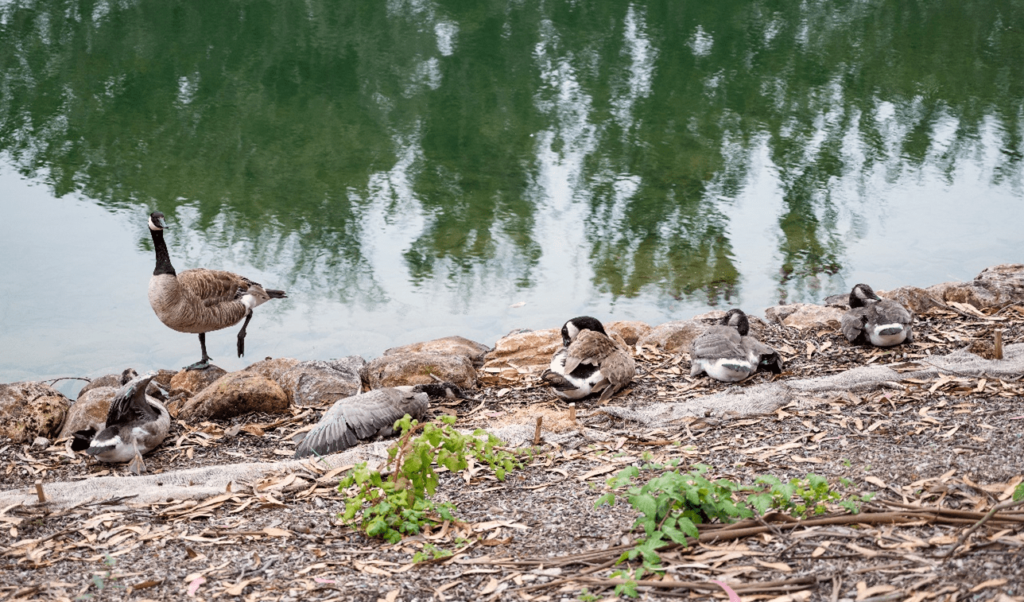 Photo by Oscar Roussel
Photo by Oscar Roussel 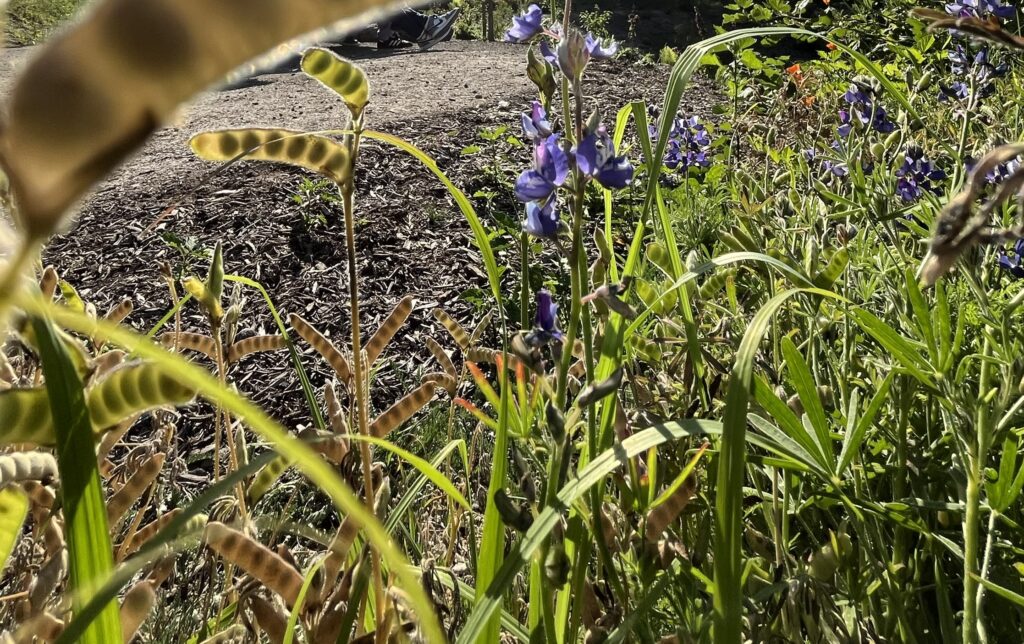
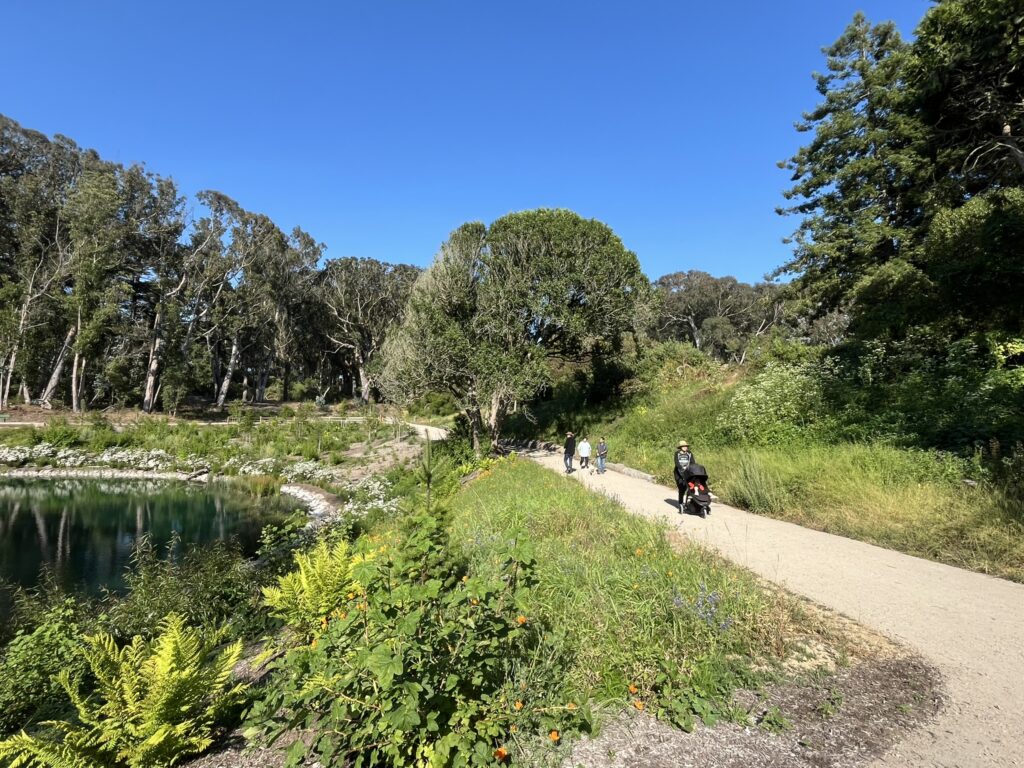
Even prior to its official reopening, the lake had drawn many eager park users, who sneaked through small openings in the fencing to take a look and enjoy walks on its trail that wraps around its half-mile edge. Construction was delayed to accommodate a hawk family that had nested during the construction start-up. Now there is a thriving raptor community soaring above this new and growing riparian ecosystem.
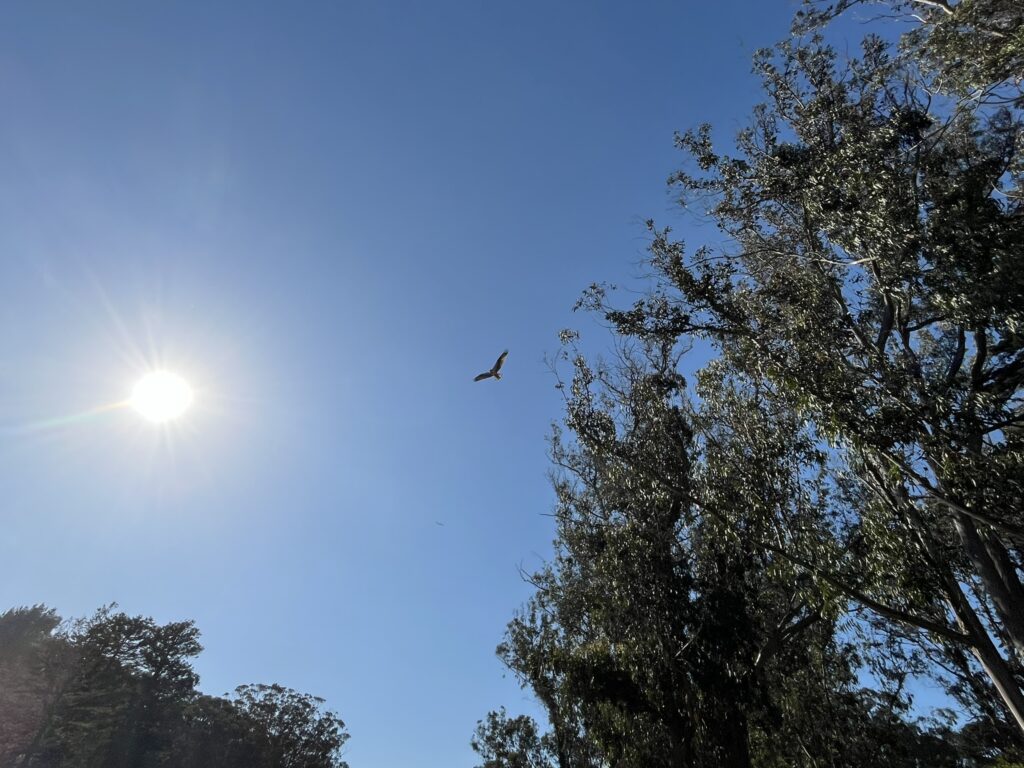
A System Designed to Create a Healthy Aquatic Ecosystem
The restoration process involved an initial assessment of the lake, followed by the removal of 25,000 cubic yards of silt to create and contour a seven-foot-deep basin with two historic islands, and the installation of a new nearly 2-foot-deep clay liner meant to maintain the water level long term. To ensure a healthy water level and good water quality, the design added a cascading stone streambed (the Cascade) that flows adjacent to an intentionally meandering and accessible path, crossed by footbridges, that provides water to the lake below from the park’s Fly-Casting Pools situated to the east of the Lake. Aerators at the lake’s bottom recirculate water and oxygenate the lake’s hydronic column. Overflow from South Lake flows into Middle Lake’s newly designed, stone-lined inlet and circulates out again at the new outlet spillway, into North Lake, connecting the Chain of Lakes with a constant flow of fresh water.
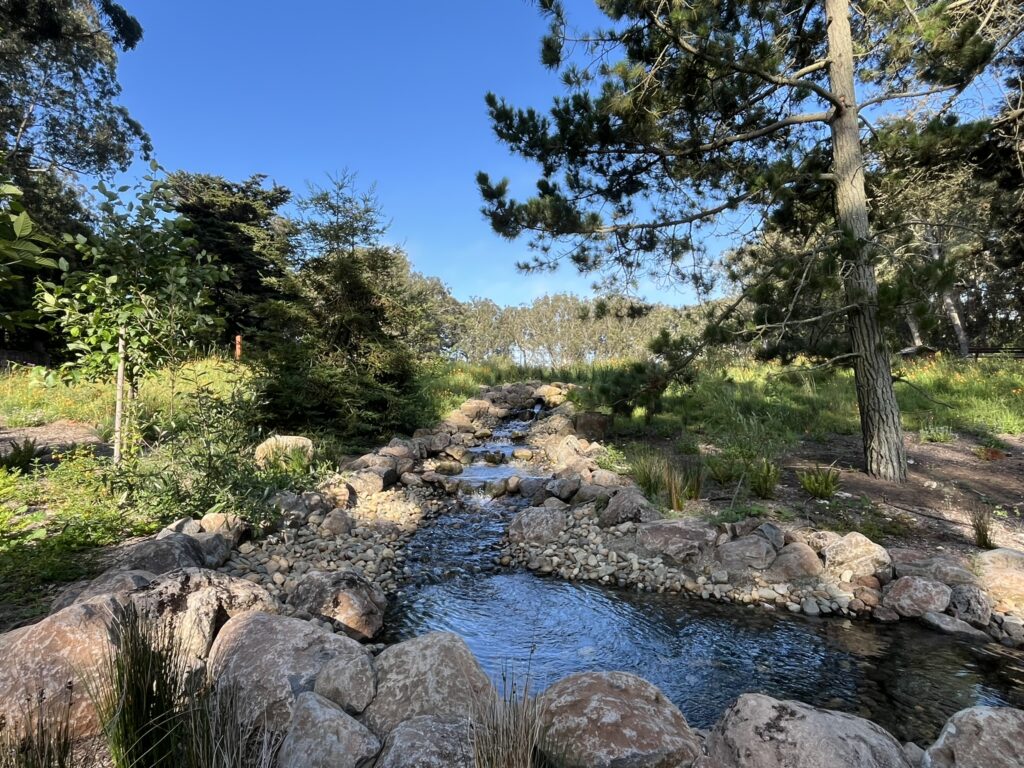
The Cascade stream, along with the south-to-north cross flow, not only significantly reduces algae growth by keeping the water’s surface in motion, creating a healthier aquatic environment, but it also creates the delightful experience for park visitors of the sound of a burbling creek, flowing over natural stone water weirs and check-dams, swirling between deeper pools on its sinuous journey down the eucalyptus-forested slope – a visually and aurally exhilarating and memorable experience.
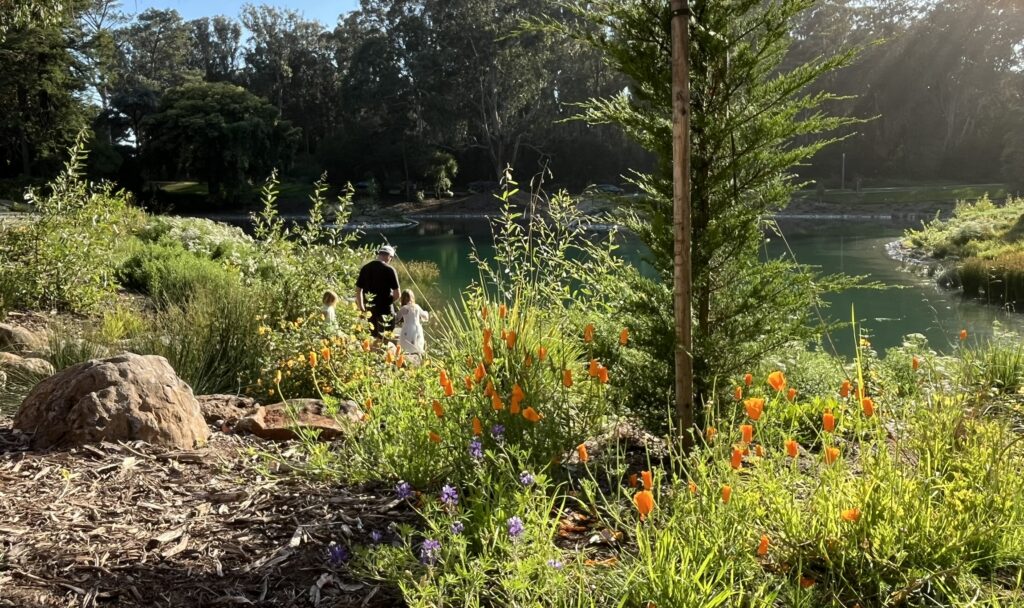
Native Plants Increasing the Biodiversity of Both Flora and Fauna
The planting of native upland species such as California sage, beach strawberry, Coyote Brush, wild rose, California poppy, and lupine attract butterflies and hummingbirds, help stabilize the soil, and provide protected habitats for many of the park’s wildlife. Other important plants that are creating and conserving habitat include newly planted coast live oak trees, coast redwoods, Monterey cypress, alders, and woodland flowering dogwoods, whose canopies will expand to further frame views and provide shade and intimacy along the lakeside paths that circumnavigate the new water body. Numerous native grasses, perennials, ferns, and shrubs fill in the extensive palette of understory flora carefully selected to enhance the biological interdependence of the park’s thriving ecology. The lake’s restoration is expected to attract about 350 different animal species to its shores, including ducks, frogs, salamanders, turtles, dragonflies, and a multitude of bird species.
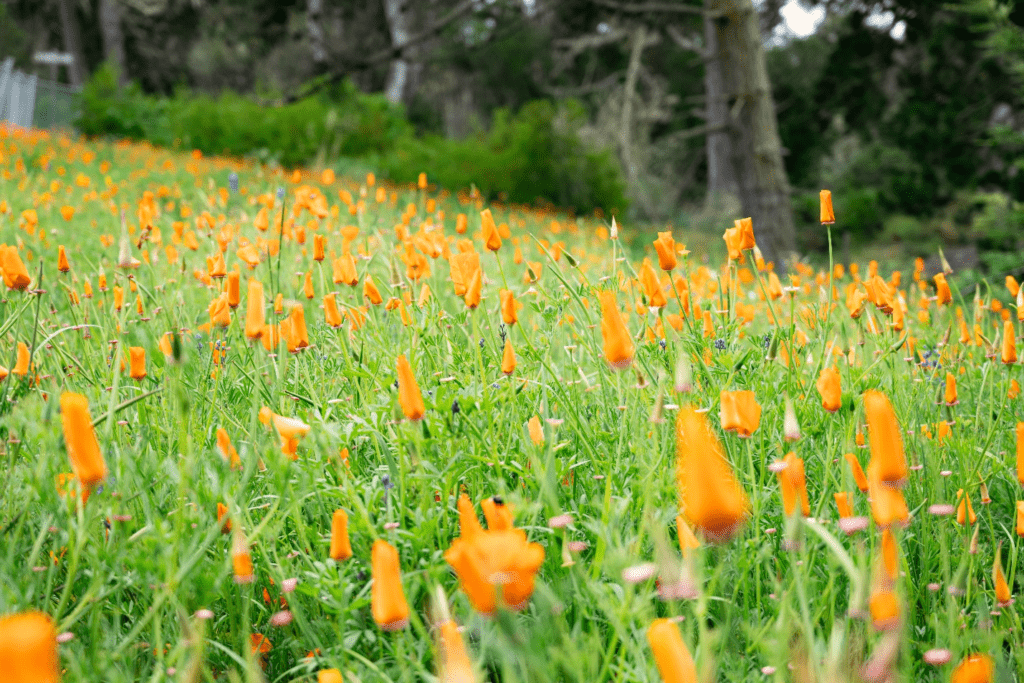 Photo by Oscar Roussel
Photo by Oscar Roussel
Aquatic Specific Design
The design of the lake-reinforced shore and small island prioritizes a sequence of shallow “literal zones” where sunlight and oxygen are easily accessible to aqueous plants and small creatures that find shelter from predation in these teaming shallows at seven locations along the lake’s edge where additionally large fallen tree trunks are strategically positioned to enhance this productive protected edge. Here the base of the food chain is born and develops, allowing the lake ecology to flourish. The largest aquatic shelves are situated at the lake’s outlet and inlet where these 4 to16 inch-deep shallows are built up to create the lake’s natural filters and most generative biological zones.
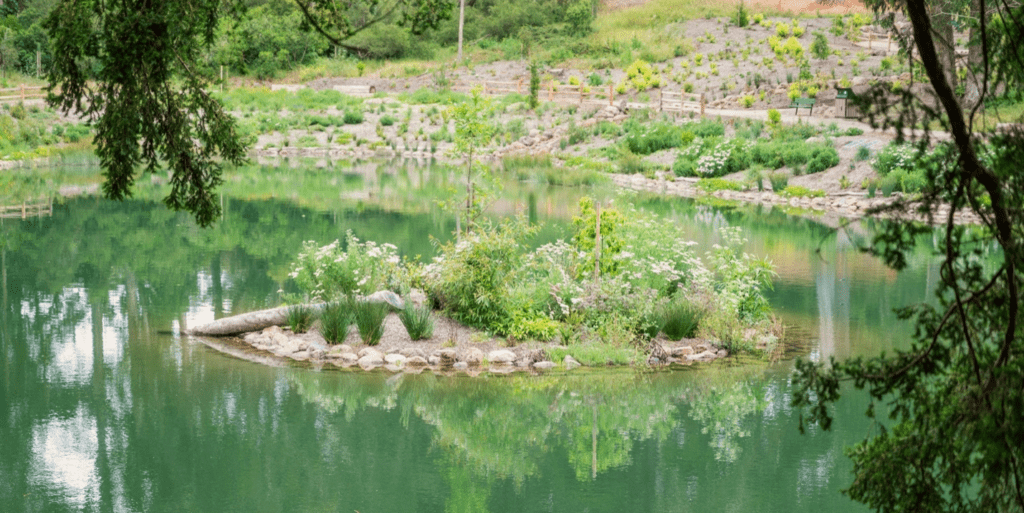 Photo by Oscar Roussel
Photo by Oscar Roussel
Another ecological and environmental benefit of the lake, besides enhancing biodiversity, improving water quality, and increasing habitat, is that it acts as a significant source of carbon sequestration. The lake bed captures and stores carbon from organic matter that settles there. The newly planted vegetation also aids in capturing carbon and helps mitigate the impacts of global warming. Moreover, the lake helps regulate local temperatures, supports groundwater recharge, and contributes to the overall health of Golden Gate Park’s natural environment.
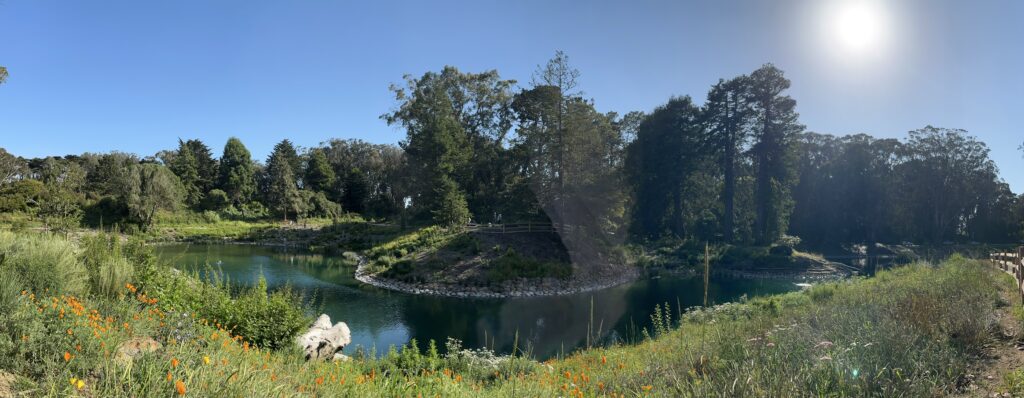
A Place for Plants, Animals and People
As of July 2024, Middle Lake is now open, offering the community a serene place to relax by the water amidst bright, colorful flowers, with ample opportunities for walking, bird-watching, contemplation, and picnicking. The main entrance to the lake is from Chain of Lakes Drive East, which features a small parking lot and connects to the lake’s curvilinear pathway loop. The lake can also be accessed from the fly-casting pools located above the lake by way of a winding path, lined by flowering dogwoods beside the creek, leading down across two wooden footbridges towards the lake edge path loop.
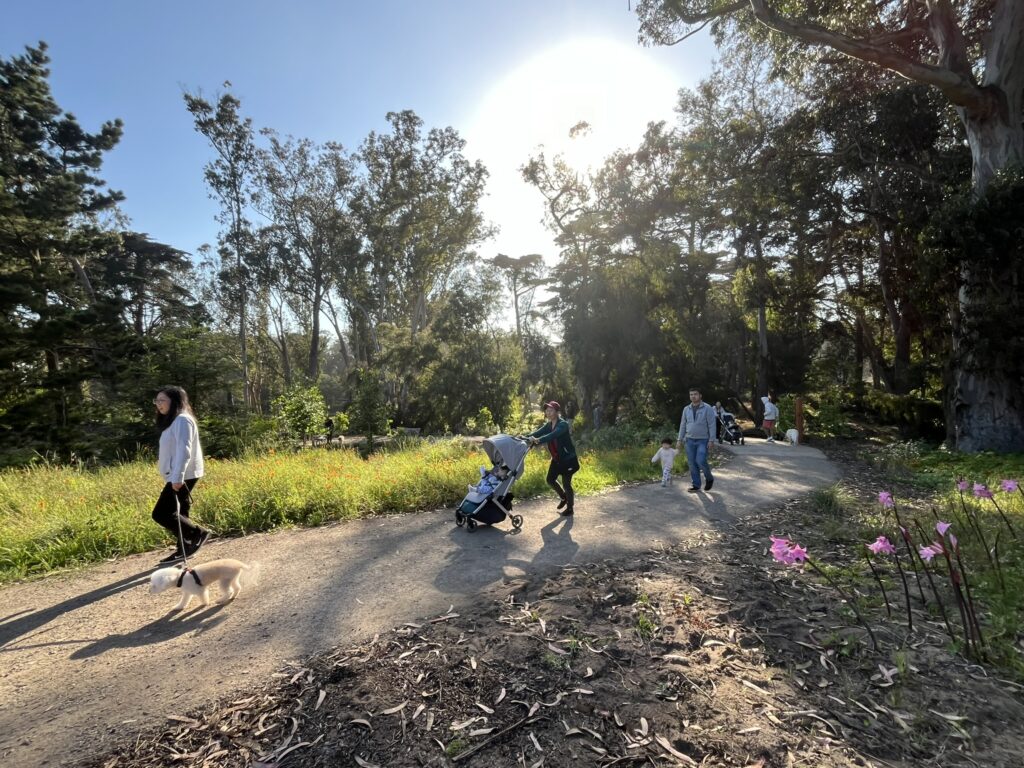
Visitors to Middle Lake will also discover numerous places to enjoy vistas of the lake and contemplate this new environment – the Wedding Lawn on the south that overlooks the lake and is found within a grove of Redwoods, both existing and new and surrounded by benches fabricated from a repurposed and harvested redwood from the site; around the perimeter are park benches to enjoy lake vistas, and large sit-able logs made of harvested eucalyptus trees that were removed due to hazardous conditions and recontouring for the routing of newly proposed pathways; more log seats and sculptural logs along the Cascade path as places to pause, hear and see the adjacent cascade waterway, and spots to allow youth to engage with the natural environment through a series of informal goat paths.
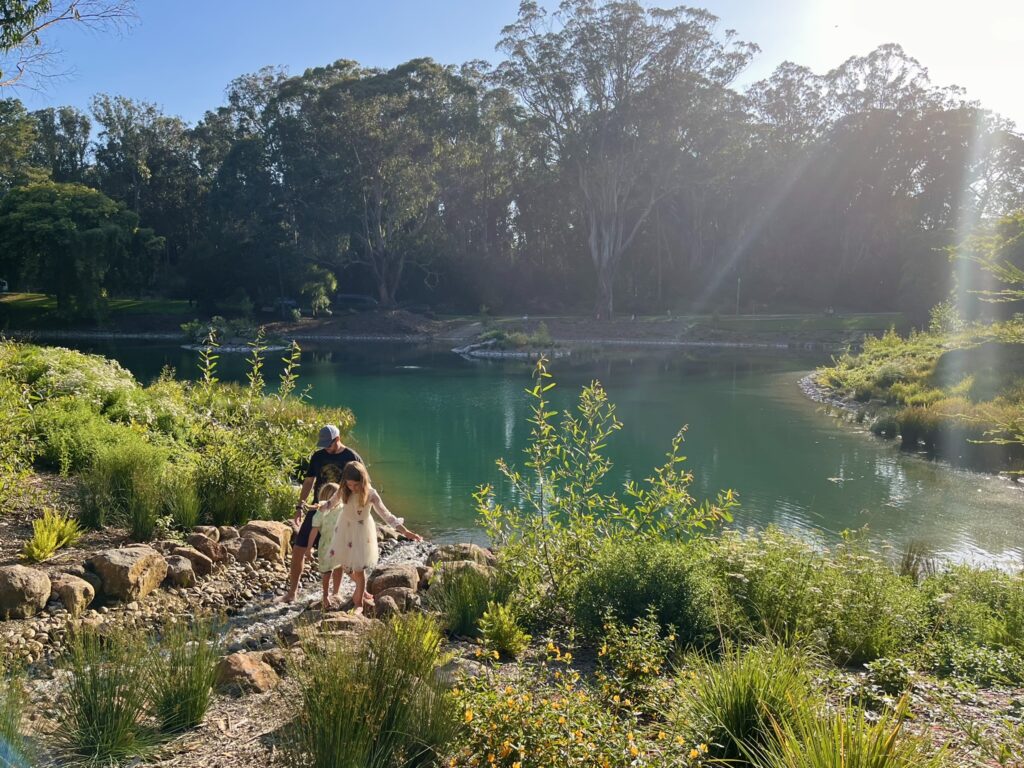
Gratitude for our Team and a Mission Fulfilled
Participating in the conservation of this lake has been an honor and a testament to teamwork. Through restoring Middle Lake’s natural beauty and ecological value, and enhancing its role in our local ecosystem, our team has had the opportunity to contribute to our City community and our region’s health, biodiversity, and resiliency. We are excited to share it with the community and invite everyone to experience its transformation firsthand. This restoration is a testament to the power of thoughtful design and community collaboration. The rejuvenation of this area in Golden Gate Park will have lasting benefits for both the environment and the community – hopefully for at least another 150 years to come. We invite everyone to visit and enjoy!
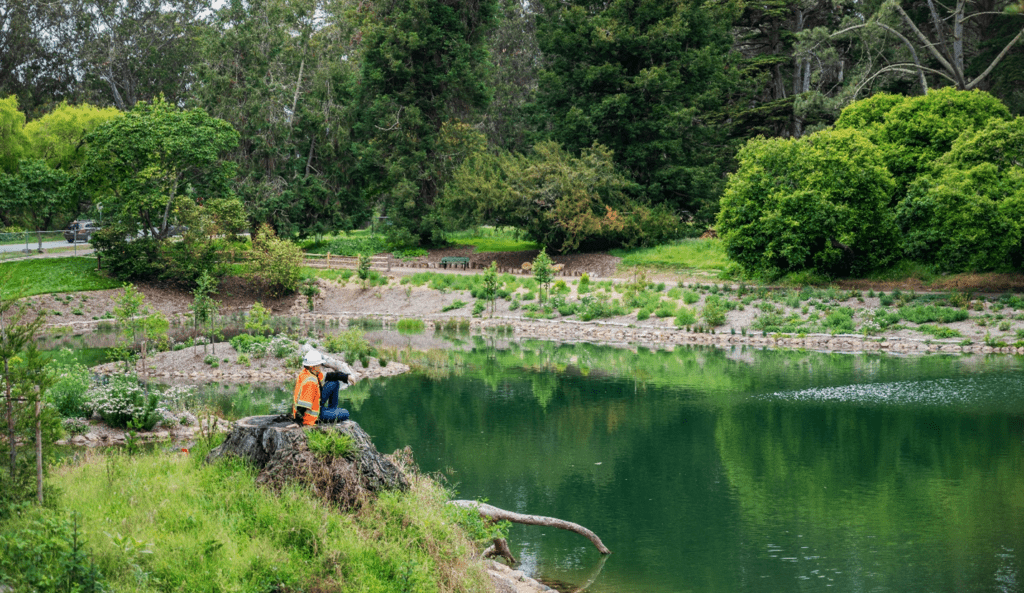 Photo by Oscar Roussel
Photo by Oscar Roussel
Saratoga Beach House
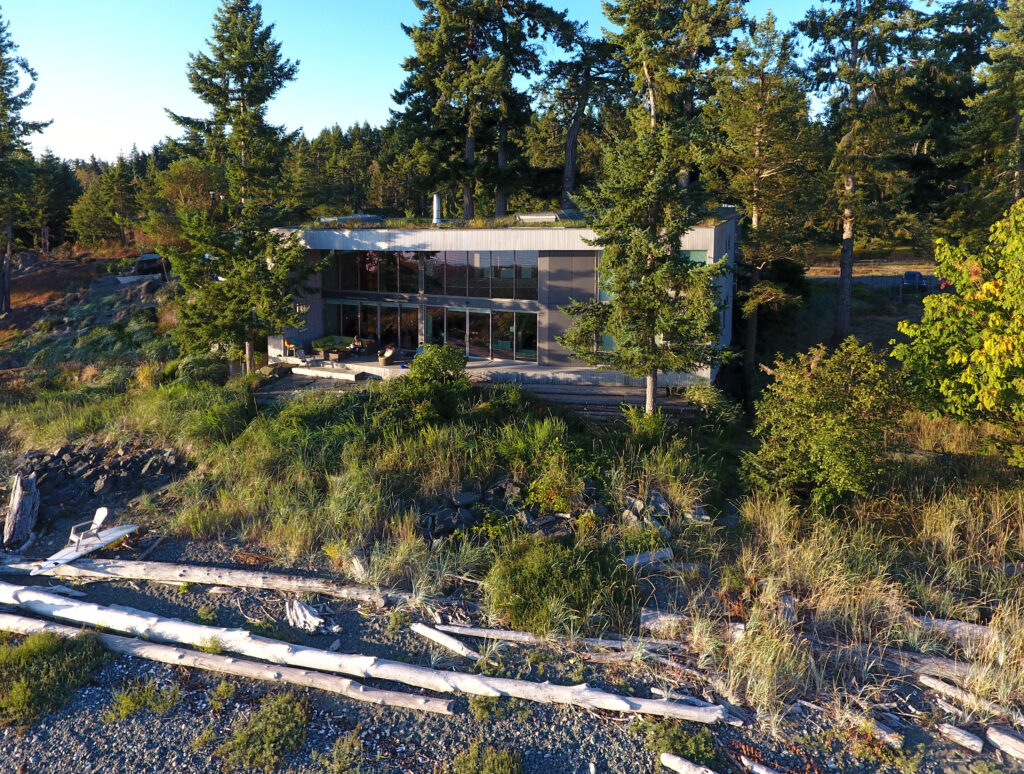
The Beach house: “All Grown-In”
It is always a rare pleasure to get pictures from our happy clients. Especially when they turn the camera on the architecture projects that have transformed their lives – and … even more so when they buy a drone and try out their airborne camera on one of our favorite projects, completed over a dozen years ago! Revisiting the Beach House in this blog as it grows-into the Vancouver Island Coastline is a special delight.
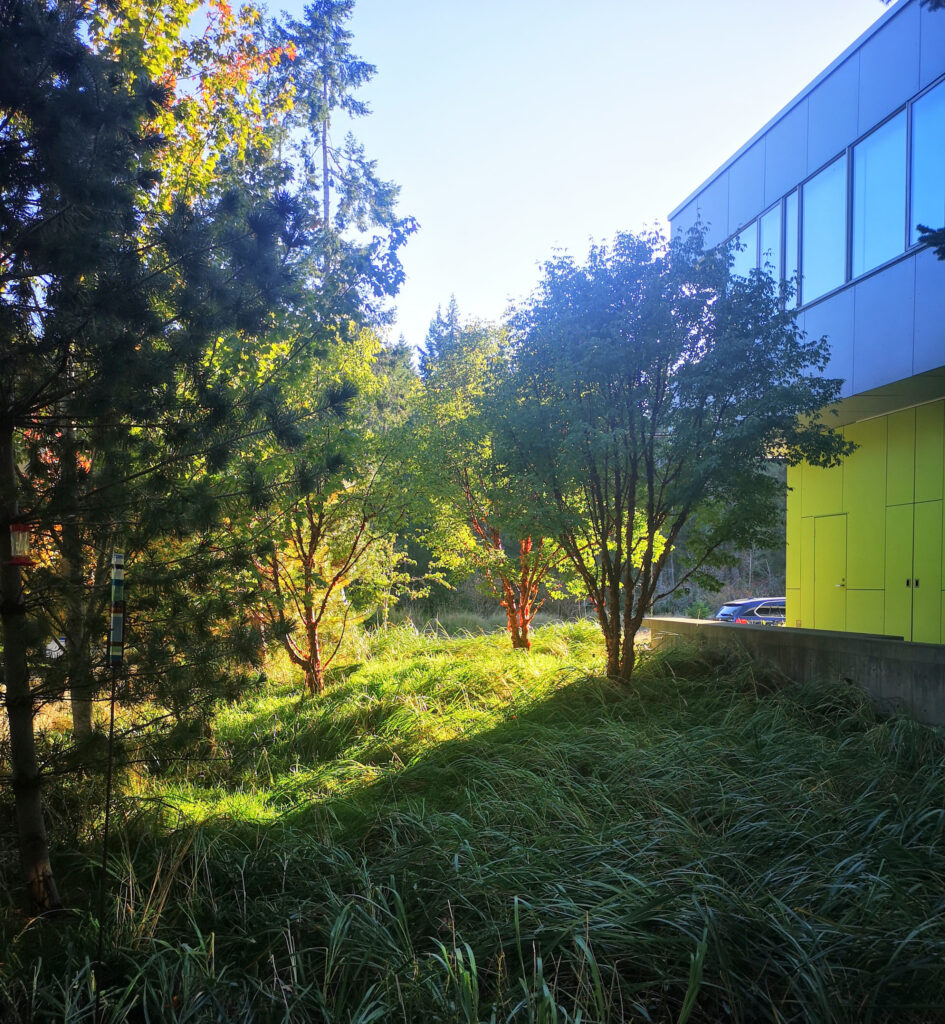
The home was deliberately designed to blend in with the surrounding coastline. It was engineered to be light on the land – from its pilots foundations, hand dug and arranged to avoid the roots of centuries old trees, to its deep rooted invisible sea wall and the inverted dispersal roof drainage. Its radiant all-electric heating, its green roofs, and power independence – is exemplary of what development should look like on these beautiful riparian edges. It is ecologically integrated, invisible to the mature vegetation which has grown to engulf and protect it. Its partnership with the land is a testament to our clients’ commitment to our intimate design process of careful integration of landscape and architecture to benefit both the dweller and the site dwelled within.
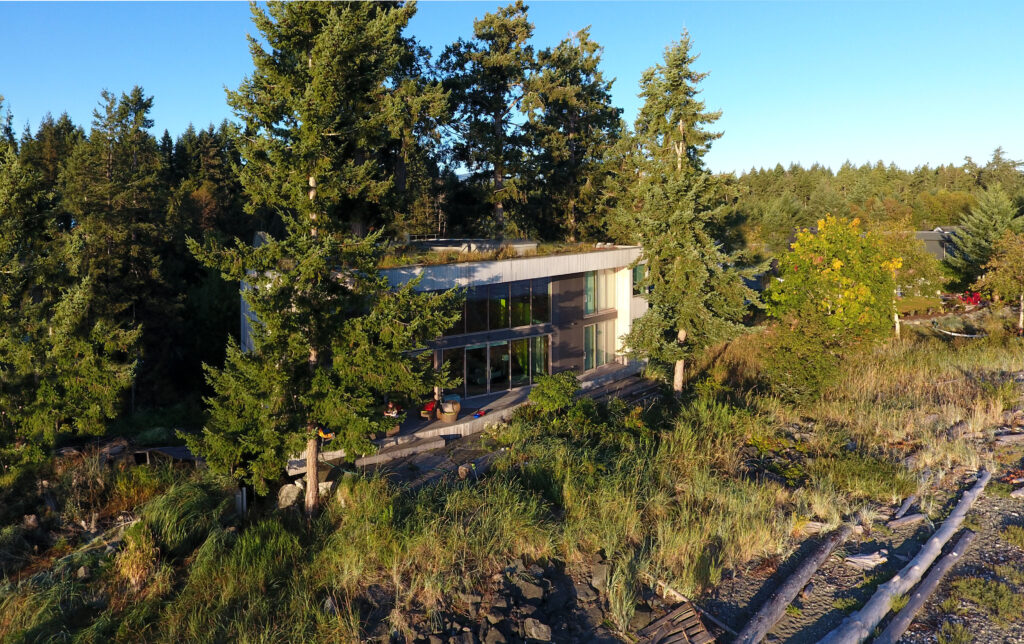
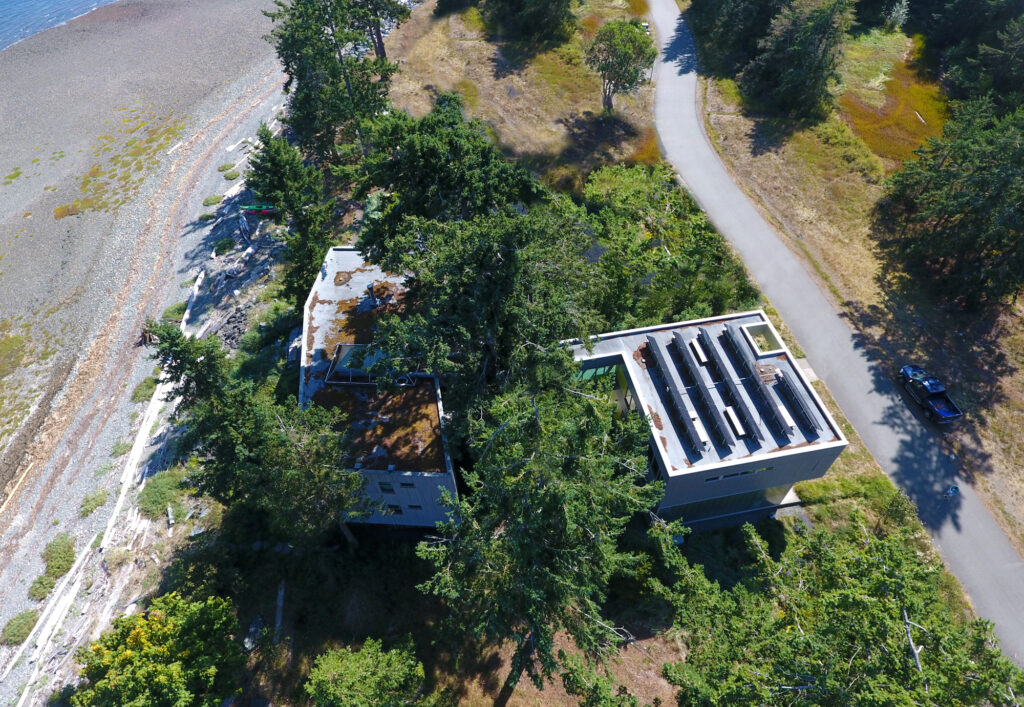
The sea wall has replenished and built up the beach, and has become a grassy gentle rocky outcrop, and its planted driveway and native gardens have comfortably completely grown in. With respect for its habitat the home is taking root, as it floats above the Oyster River flood plain on random peers that thread the roots of the ancient Douglas Firs. The entire project from architecture to site flood mitigation, and ecological controls, was designed to honor the land and the specificity of “Place”. In sympathy with the critical natural resources that are part of how these coastline edges regenerate the house helps preserve and support the richly diverse ecosystems that have flourished here for centuries.
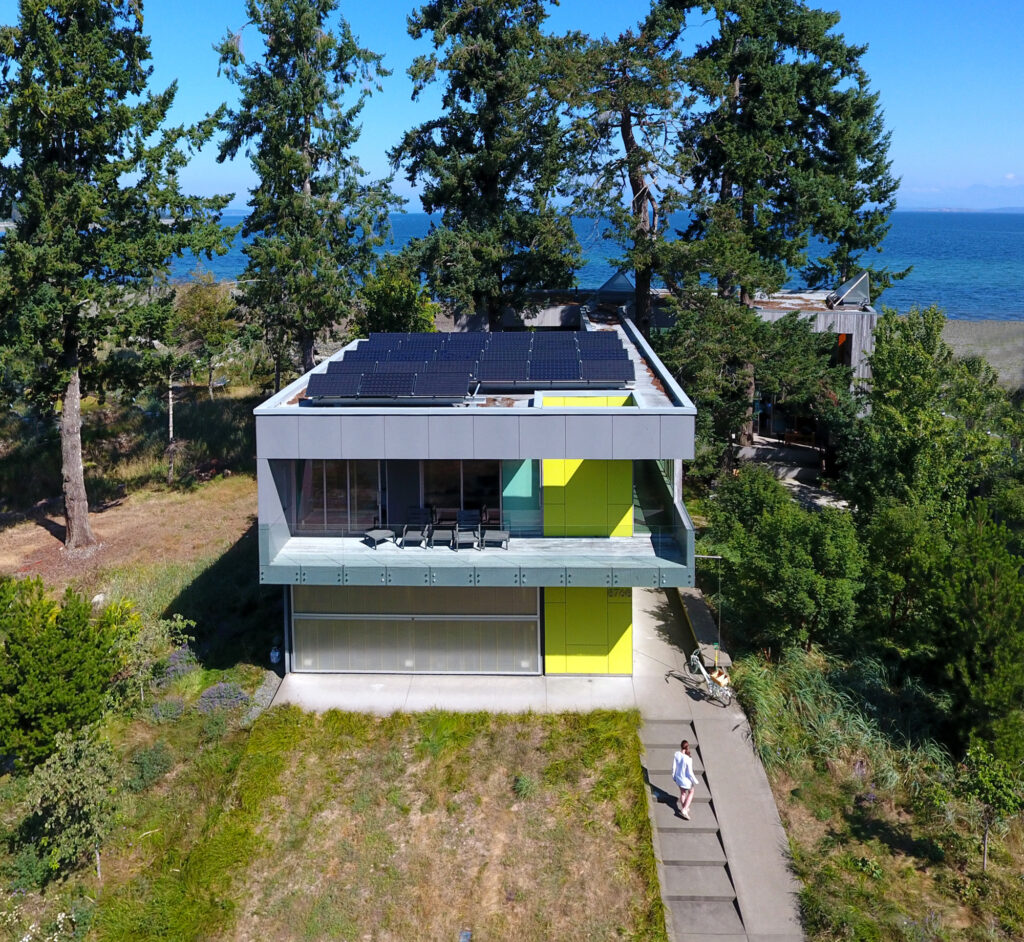
We enjoyed how hard it was to see the house in some shots – like a shy observer camouflaged into the landscape – the home seems to shelter amongst the tees and blend with the logs and tidal debris on the shore, as it peeks out of the riparian ocean front landscape it is intimately invested within.


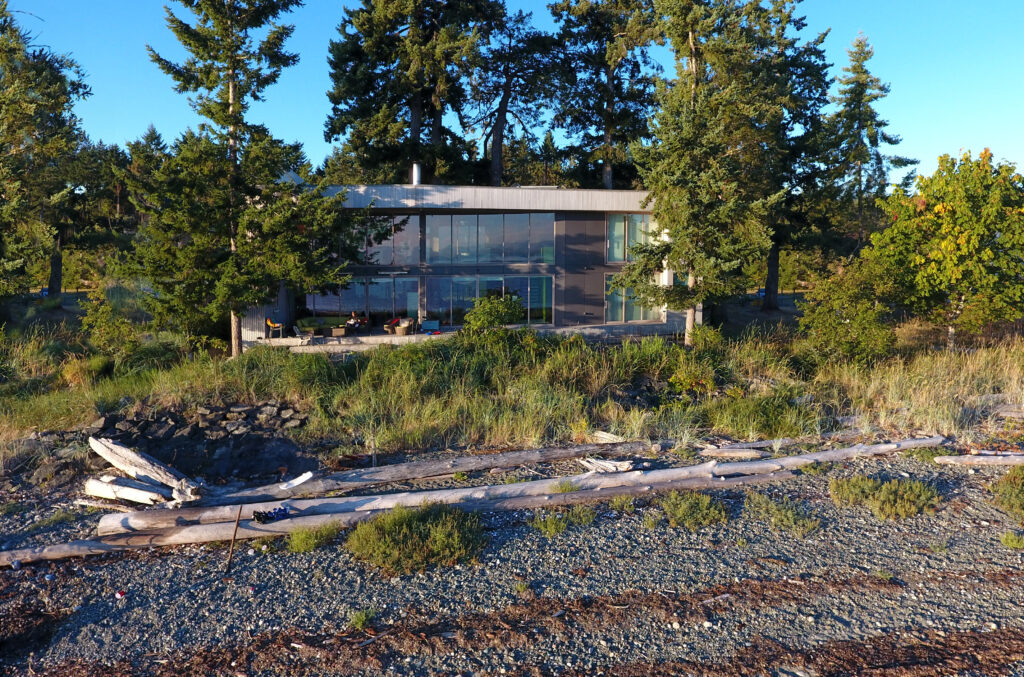

See more about this project here.
Golden Gate Park’s Middle Lake
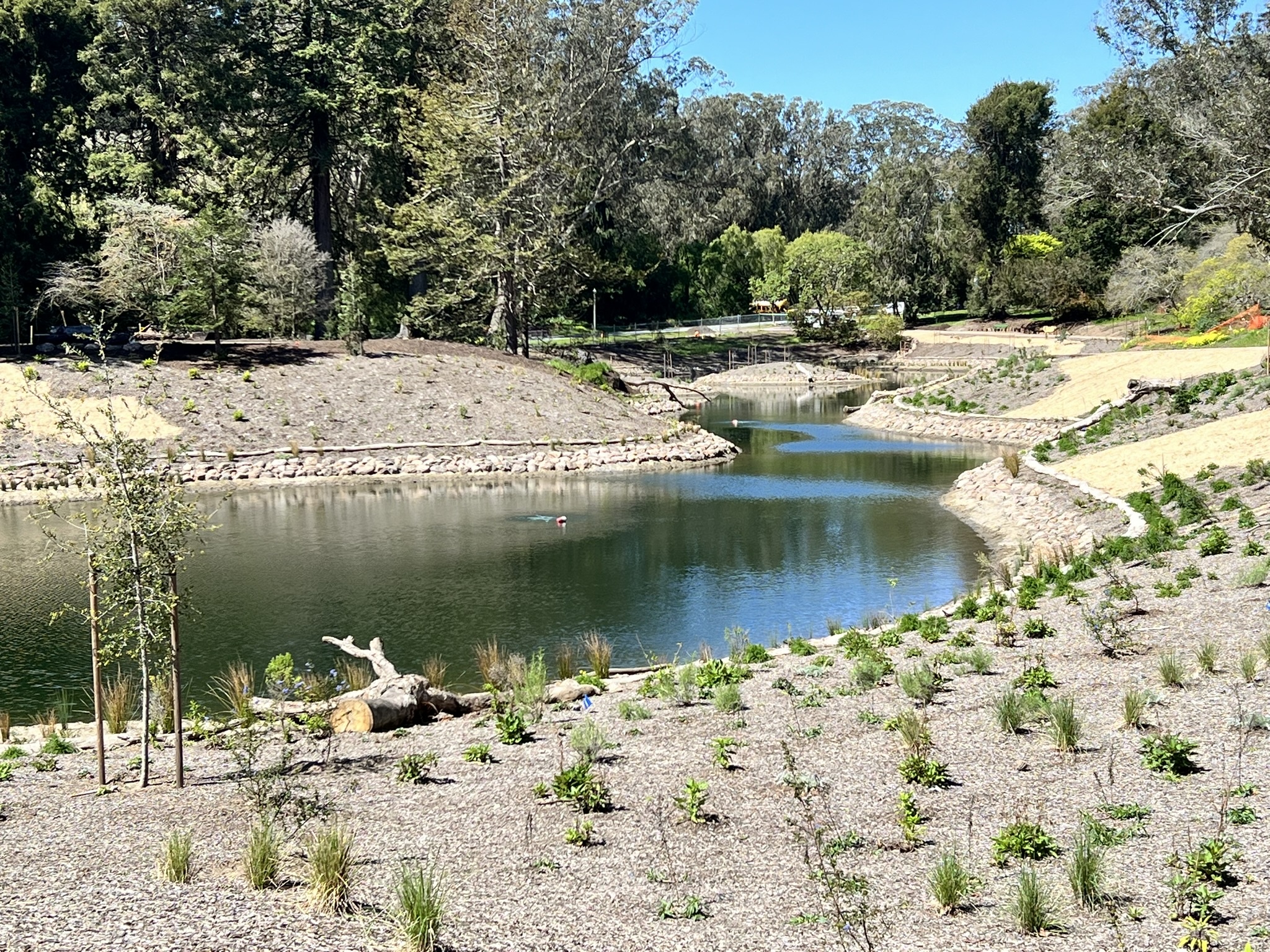
Middle Lake is Rising!
Spring is here and Middle Lake is almost complete and the water level is rising. Now home to aquatic plants, nesting birds and some 12,000 new plants including over 80 native species of trees and understory plants. Soon San Franciscans will be able to stroll around the lake’s edge, over two bridges and along a new cascade within a flowering pacific dogwood grove.
Come visit this summer to enjoy a stroll on the mile long loop trail, a contemplative vista from one of the numerous benches along the lake’s edge, or unroll your picnic blanket on a nearby lawn and listen to the chatter of the birds.
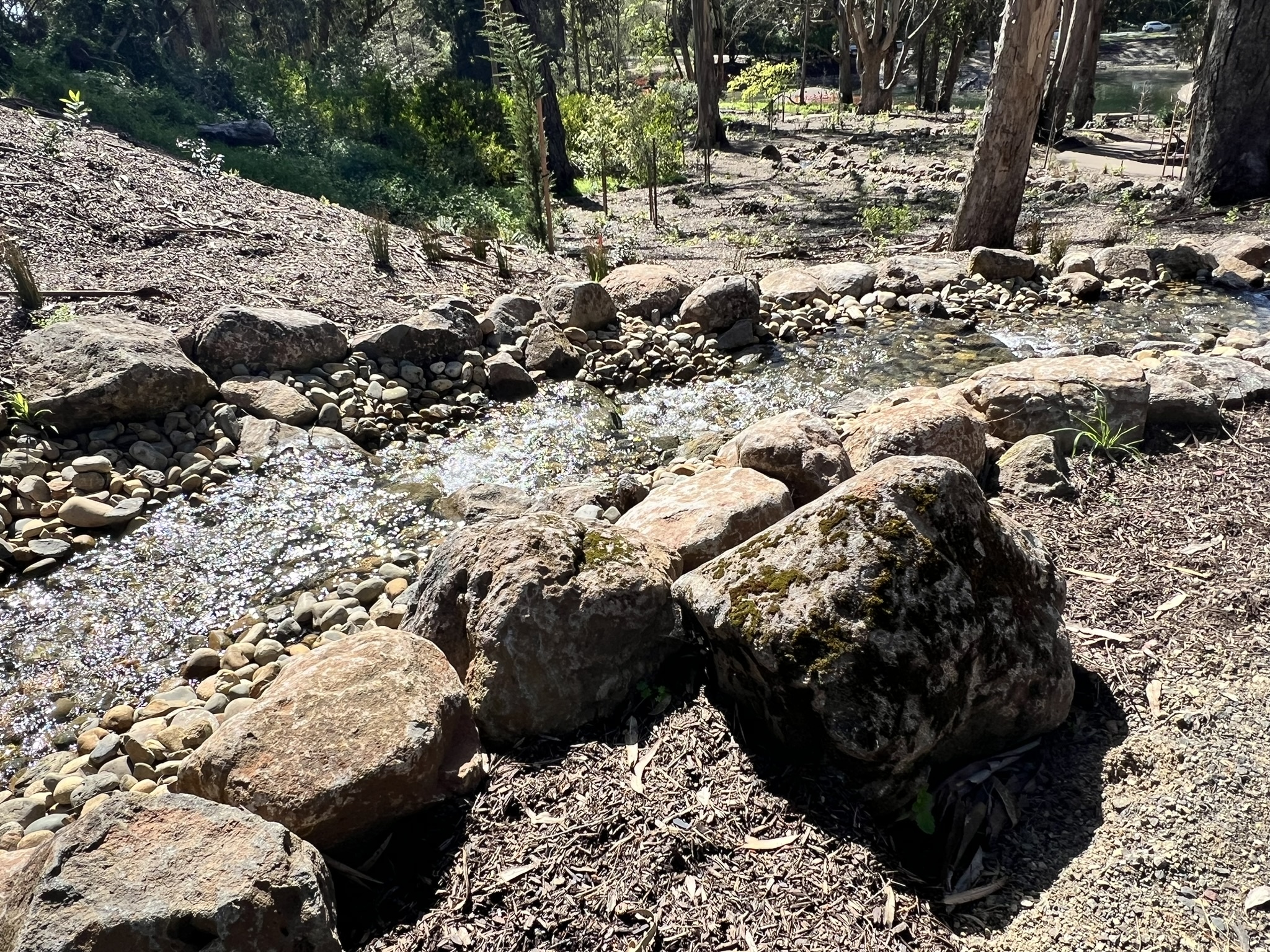

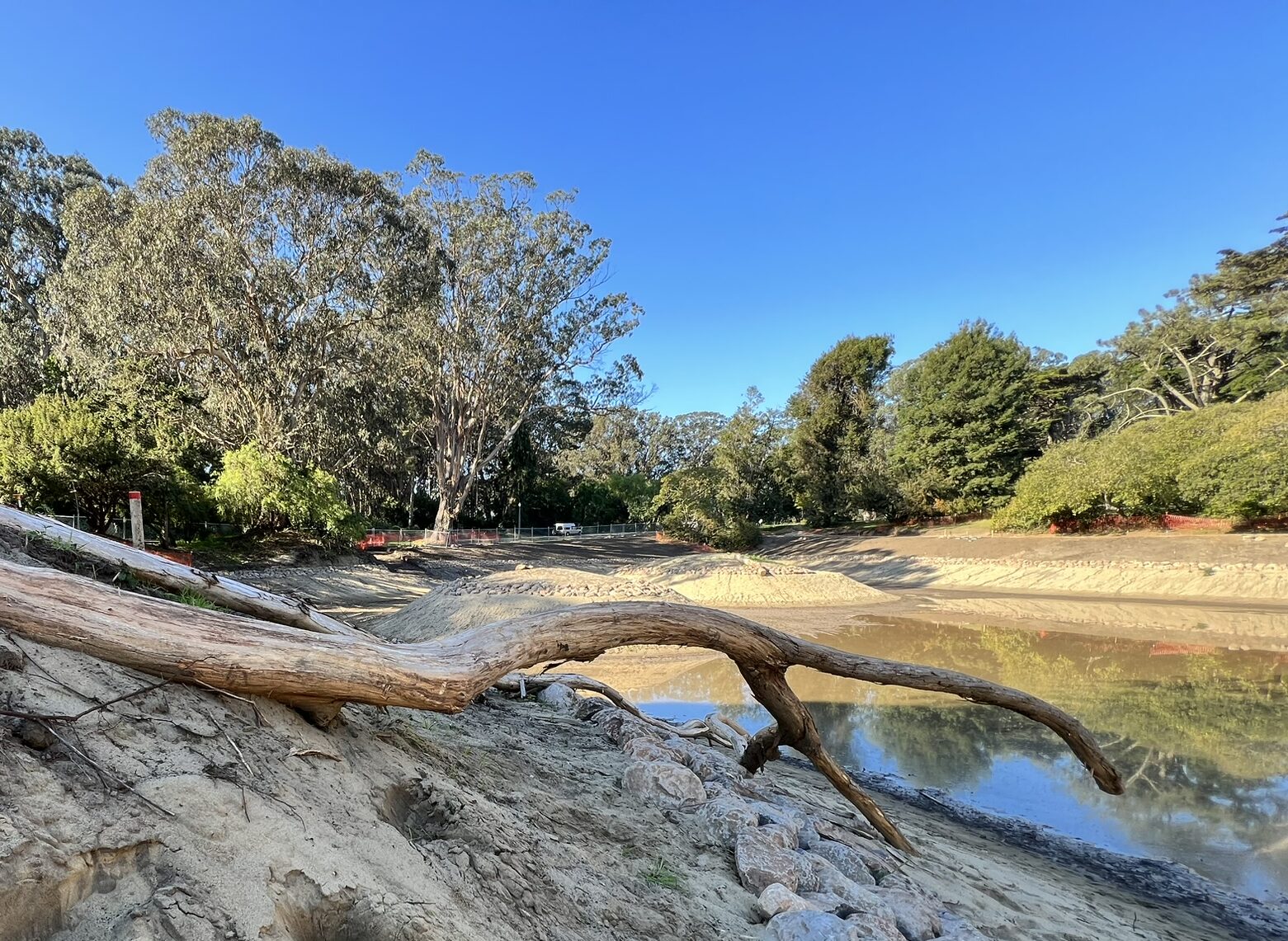
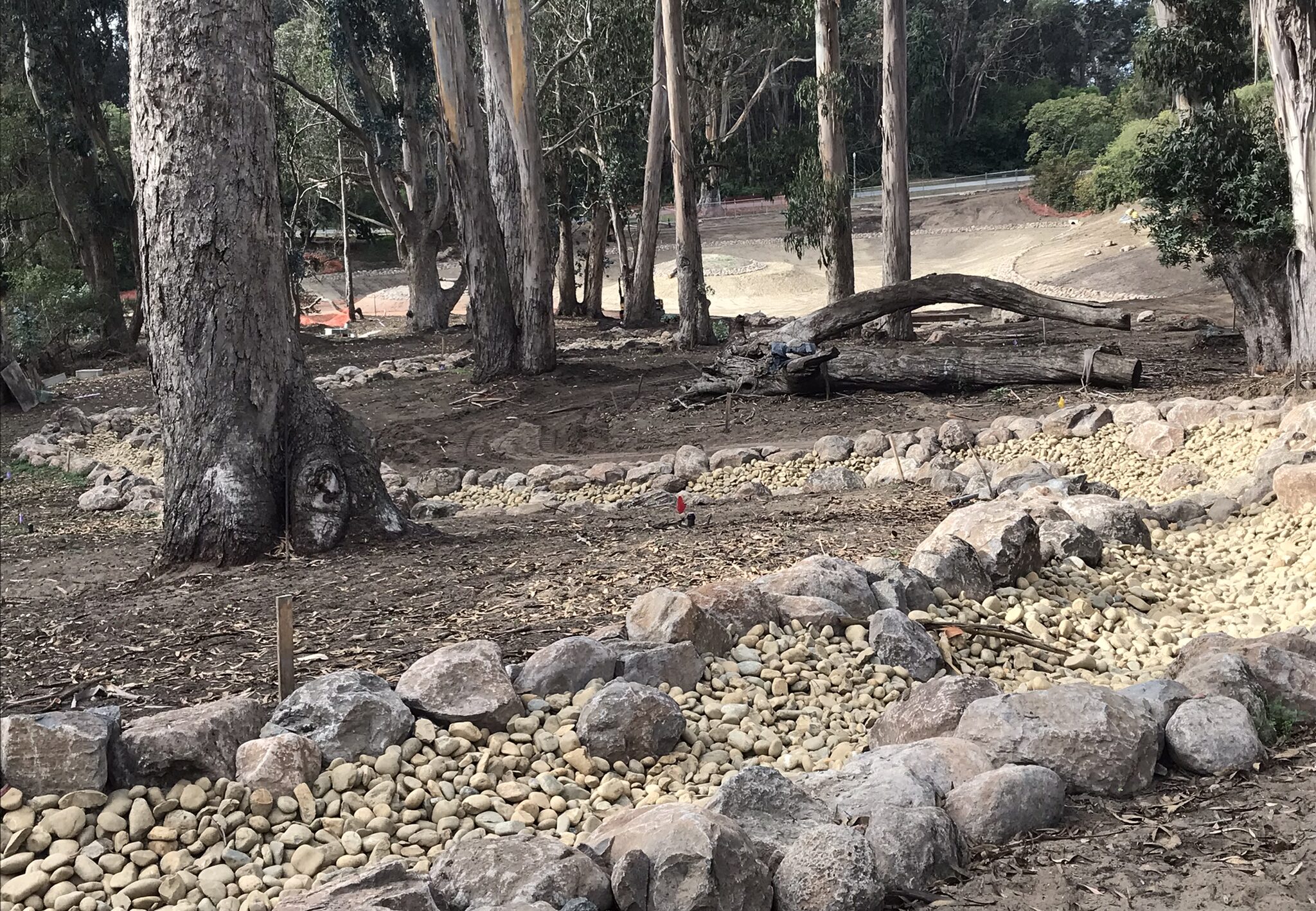
Golden Gate Park’s Middle Lake – Breaks Ground
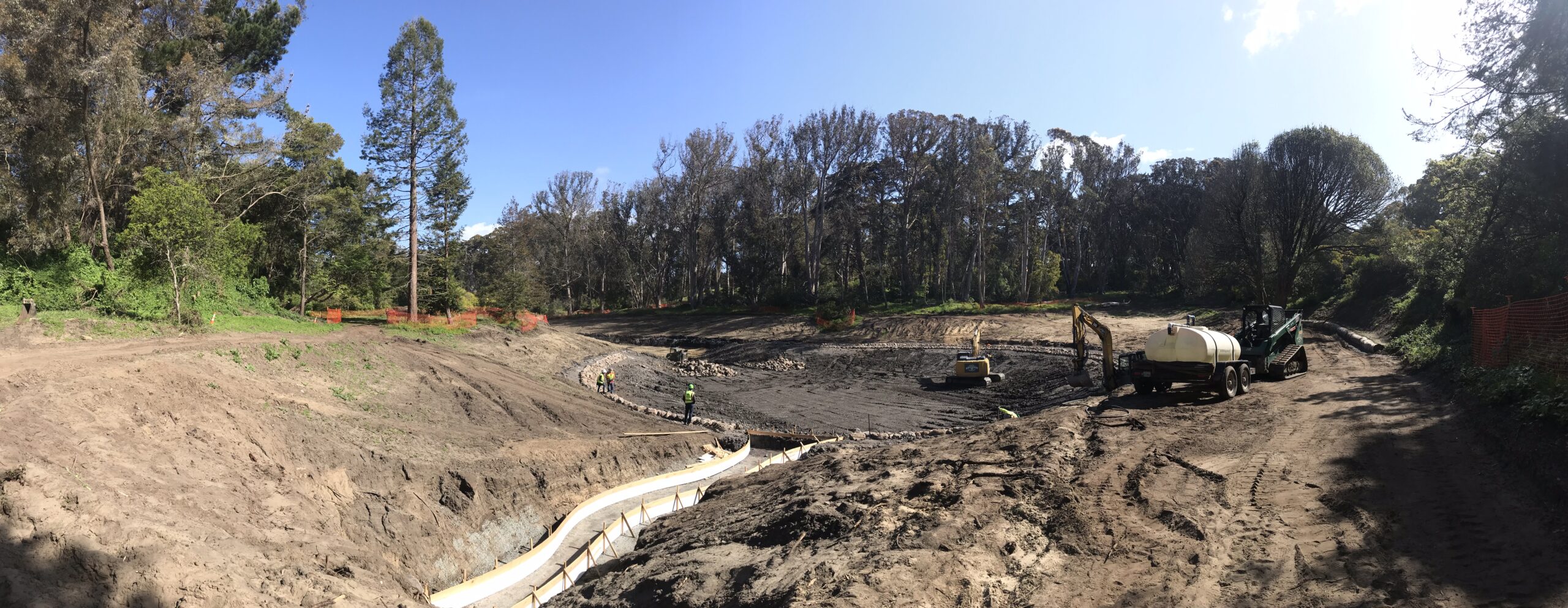
INTERSTICE is proud and excited to be part of the team that is undertaking the restoration of a critical piece of green infrastructure in Golden Gate Park; we are re-building Middle Lake. This freshwater lake is one in a series of three lakes called the Chain of Lakes, which flow north from South Lake, to Middle Lake, and into North Lake at the western end of the park. The original design & construction of these lakes dates back to 1898 and all required a clay liner to hold water over the ancient sand dunes that underlie the park.
Following a year plus long design process, construction of the project began in the early months of 2023 with the selective removal of certain trees and the protection of many other existing mature trees in preparation to rehabilitate the lake.
INTERSTICE, as the landscape architect, is working with Civil Engineers AGS and Woodard & Curran, overseeing the new lake design installation to achieve improved accessibility and enjoyment for park visitors, and a diverse plant and aquatic ecology that will provide improved habitat for insects, birds, amphibians, reptiles and mammals that constitute the spectrum of the wildlife that inhabits and moves through Golden Gate Park. Bauman Construction is the General Contractor leading the construction effort working with the SF Recreation & Parks Department and SF Department of Public Works.
This significant undertaking includes replacing the clay liner lake bottom and increasing the water depth, clearing the pipes connecting Middle Lake to South and North Lakes, and rehabilitating the rock cascade that connects to the Fly Casting Pools.
The new design includes a perimeter loop trail that bridges the cascade, significant and diverse native and aquatic plantings surrounding the lake, furnished seating areas with lookouts along the new pathway which encircles the lake and climbs the slope beside the cascade. The future plantings include over a dozen native tree species, over50 species of native understory plants, including shrubs, groundcovers, grasses, rushes and aquatic and riparian species located at the lakes edge.
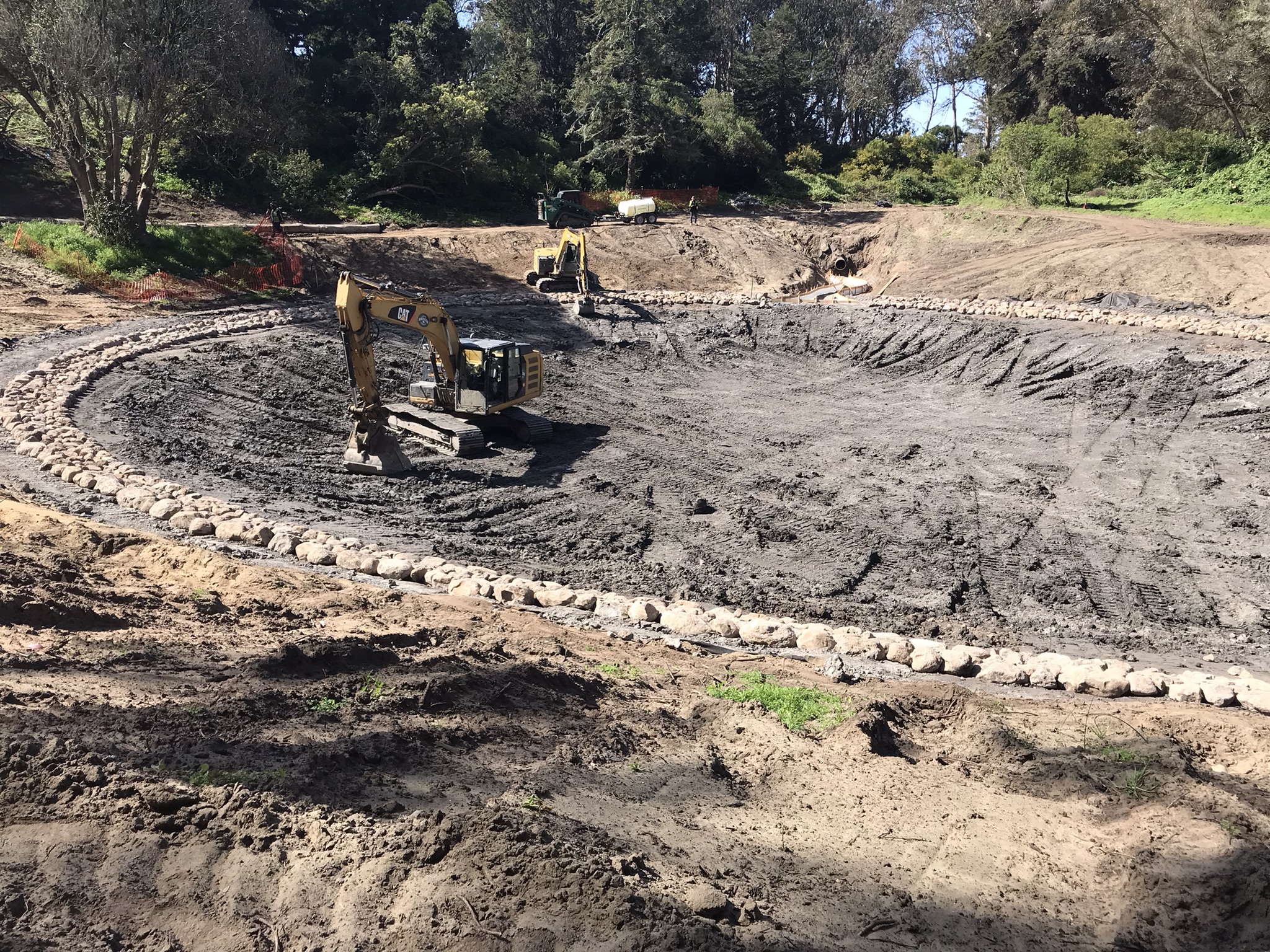
The establishment of the clay liner and lake edge are the first phase and significant part of the work.
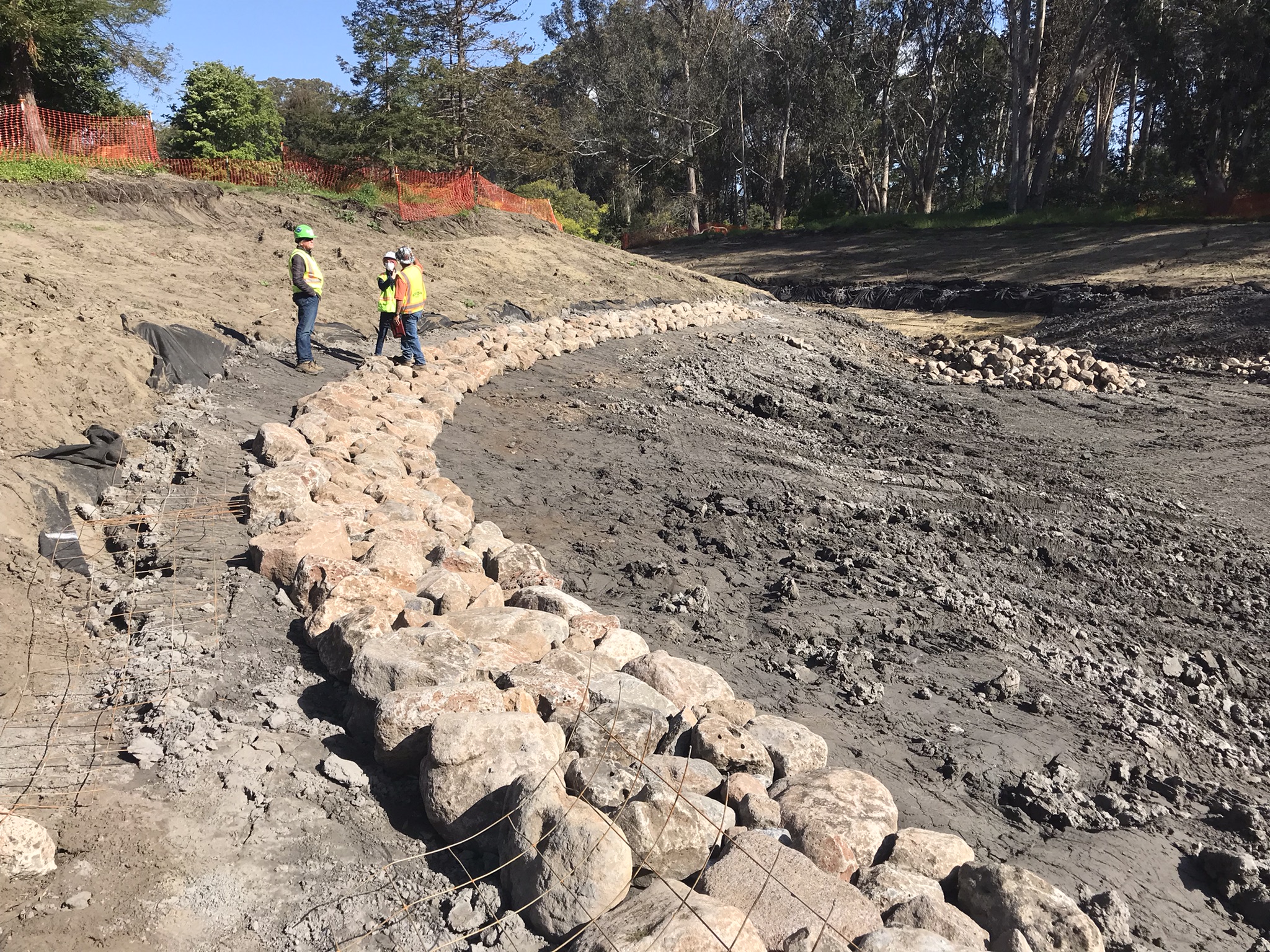
Boulder mock-ups for the lake edge perimeter.
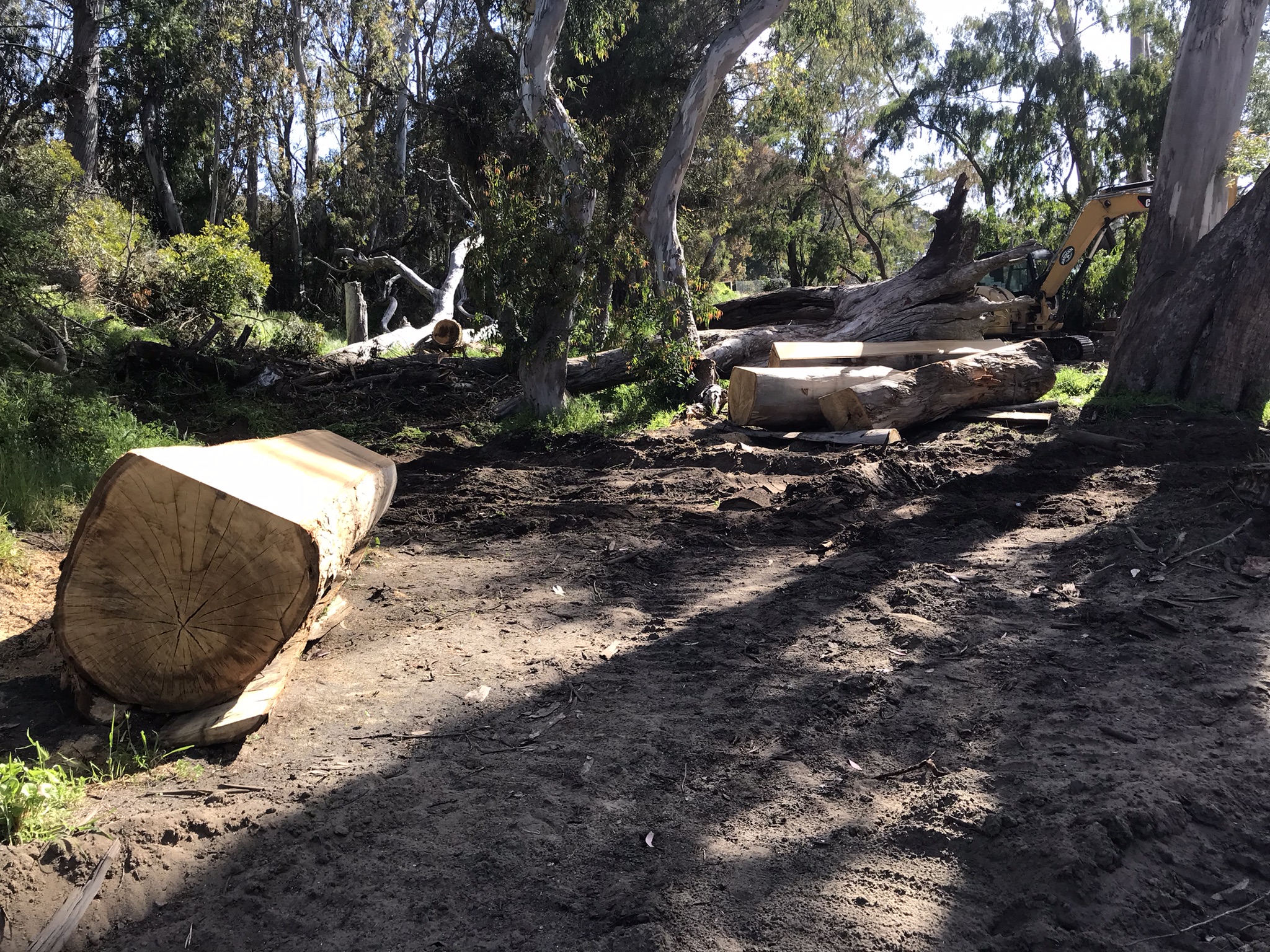
New furnishings being crafted from salvaged trees that were planned for removal or came down in this winter’s storms.
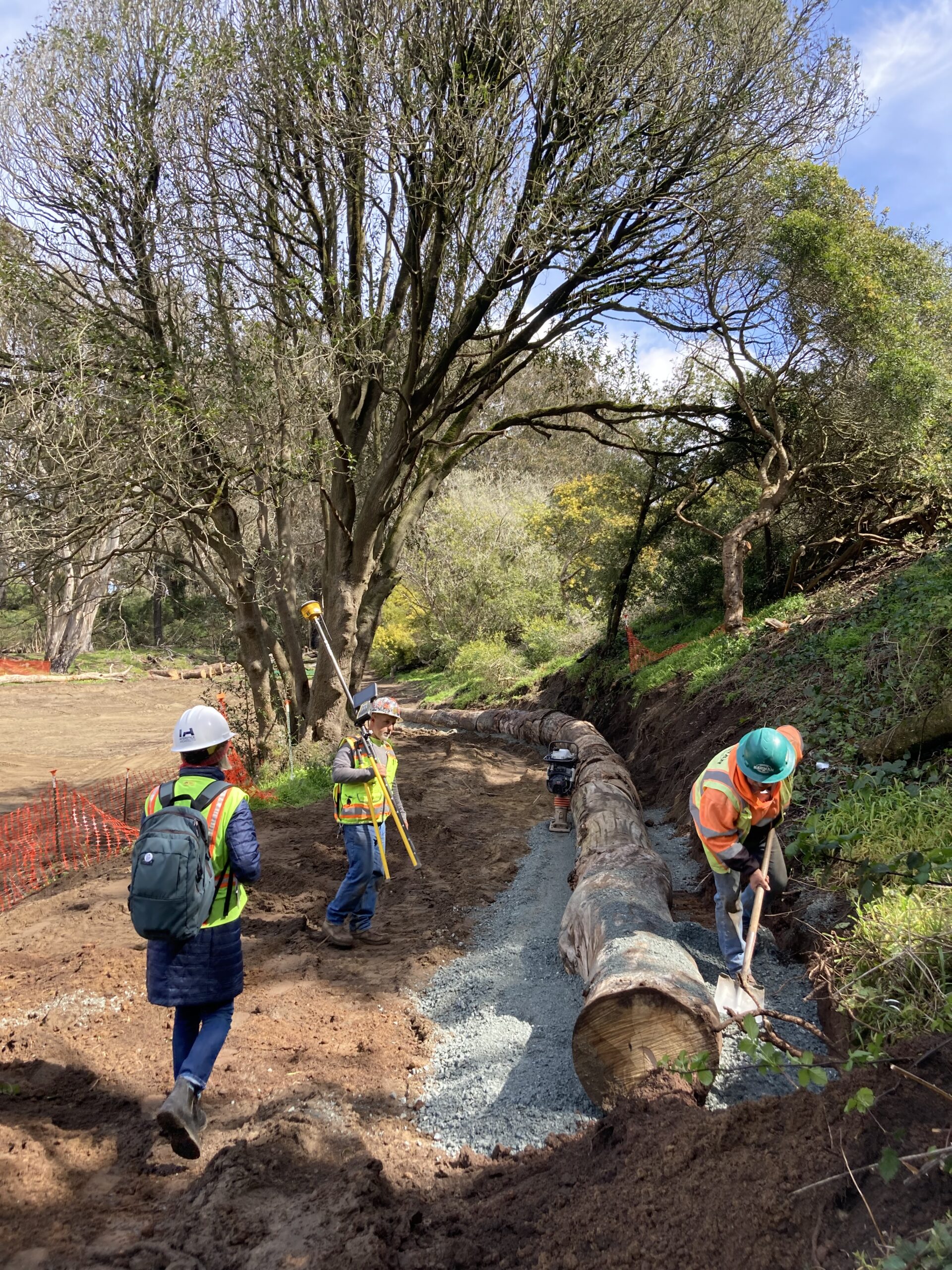
We look forward to sharing more progress as the liner is completed and the lake starts to take shape this Spring.
Amy’s Drive-Thru Construction Well Underway
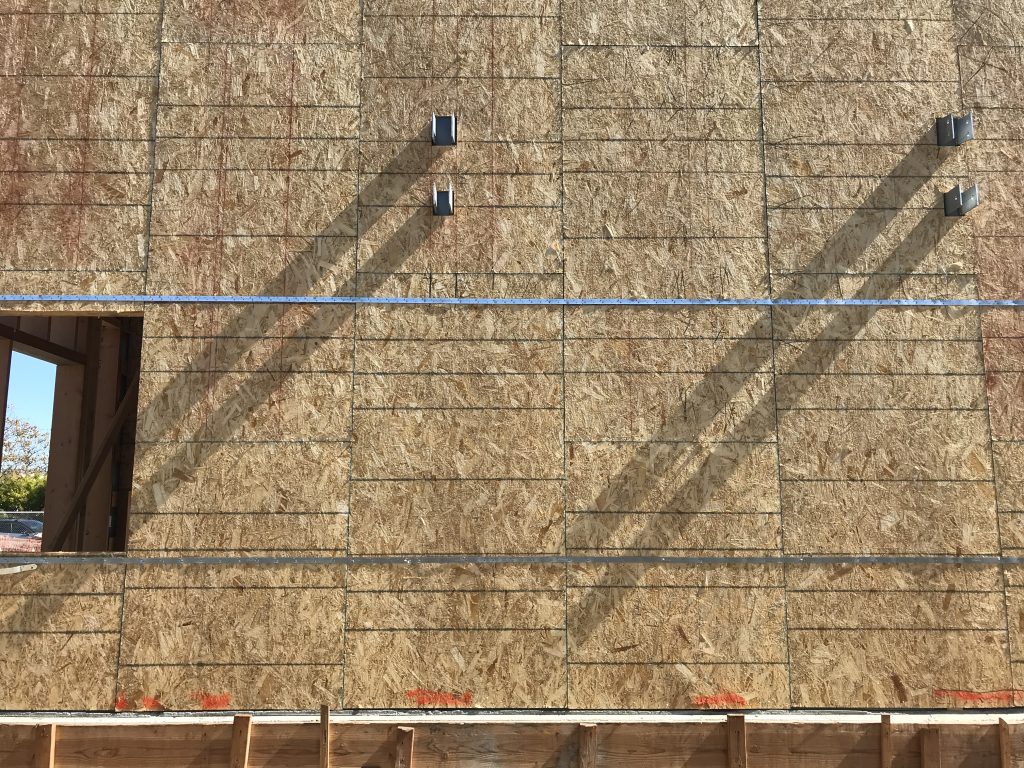
We recently drove up to Corte Madera to take a look at the progress of our Amy’s Drive-Thru restaurant project—and it is starting to take shape! It is now a fully enclosed building: walls, windows, doors, and roof have sprung up this past winter. Currently, electrical systems are being installed and the site is being prepped for paving, plantings, and parking. Amy’s will become the first drive-thru restaurant in the city of Corte Madera, fully supported by the community due to its sustainability as a vegetarian eatery conscious of its environmental impact. The green roof starts installation soon!
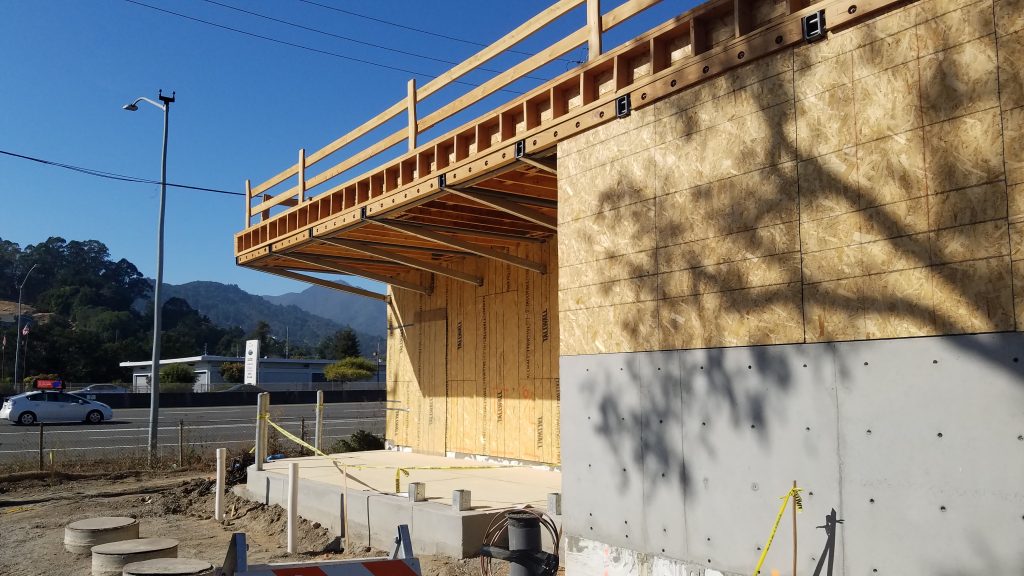
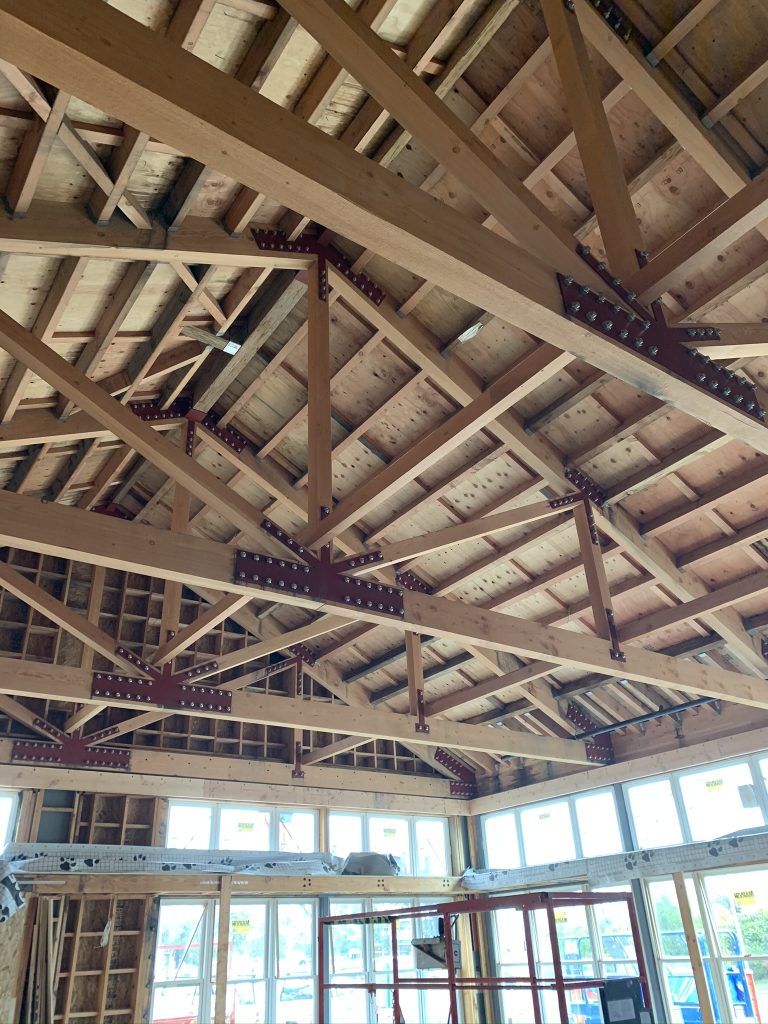
INTERSTICE Architects Installs the SF SFF / La Cocina Night Market
INTERSTICE Architects is thrilled to support La Cocina and participate in our 4th annual Street Food Festival!
This year we designed and installed a 300-foot-long sinuous bench, called the INTERSTICE banqu(ette), which meanders down the center of the San Francisco Street Food Festival’s second annual Night Market.
Over 500 pallets were zip-tied together to form an interlocking, modular lounge furnishing and bar-table kiosks with heat-lamps for people to gather, eat and celebrate the Market.
With 6 different global regions of foods represented, the Night Market is an opportunity for San Franciscans to taste the best the world has to offer, all prepared and sold by local vendors. The benches are color coded by global region and display way-finding signage also by INTERSTICE. Local artists painted the coverings for the seats.
This is the launch party for the San Francisco Street Food Festival, which spans 6 blocks along Folsom Street between 20th and 26th Streets.
Check out the team at work!
![]()
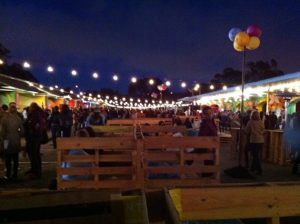
INTERSTICE's design in action
- INTERSTICE’s design in action

